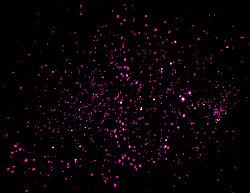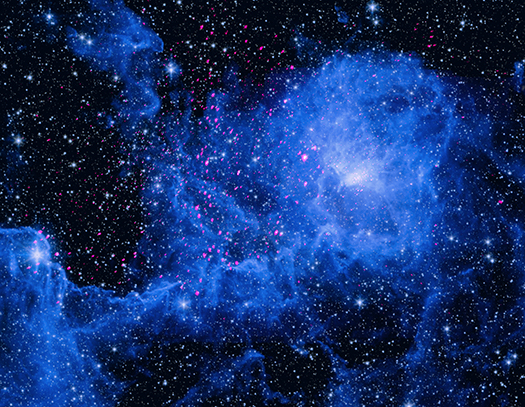Life on earth began perhaps about
4 billion years ago, when the earth was only about 10 percent of its current age. Earth's example suggests that, for planets which are situated in
favorable spots, life can arise soon after the planet cools enough. How exactly this happened on earth is not known. How often this happens around other stars in the Galaxy, or in other galaxies, is not known either. There's a fairly complex interplay between the formation of planets and the young stars around which these planets orbit. Young stars are unstable, prone to energetic outbursts many many times stronger than the powerful
solar flares we observe from our now middle-aged Sun, even the
most powerful ever seen. Presumably our own Sun had a rather obstreporous childhood as well. Powerful outbursts from young stars might help planets form, by stripping electrons from molecules and helping them to stick together to form small solid grains, then pebbles, then rocks, then finally rocky planets. Strong stellar flares can also hinder the formation of life on newly-formed worlds by driving off a planet's nascent atmosphere and blasting the planet's surface with dangerous
ionizing radiation. Since stellar outbursts emit powerful X-ray radiation, X-ray studies of young stars can help us understand the statistics of stellar flaring and its impact on the formation of planets and life. The image above is a still
Chandra X-ray Observatory image of the
Lagoon Nebula, a region of the Galaxy where large numbers of new stars are forming. By studying the variable X-ray emission from stars in the Lagoon Nebula and other star forming regions, scientists can determine the frequency and power of stellar flares from newborn stars, and constrain how such flares might effect the beginning of life in these new solar systems.
 HEAPOW: Flashing Lights - Proceed with Caution (2021 Sep 06)
HEAPOW: Flashing Lights - Proceed with Caution (2021 Sep 06)
